
漢德百科全書 | 汉德百科全书
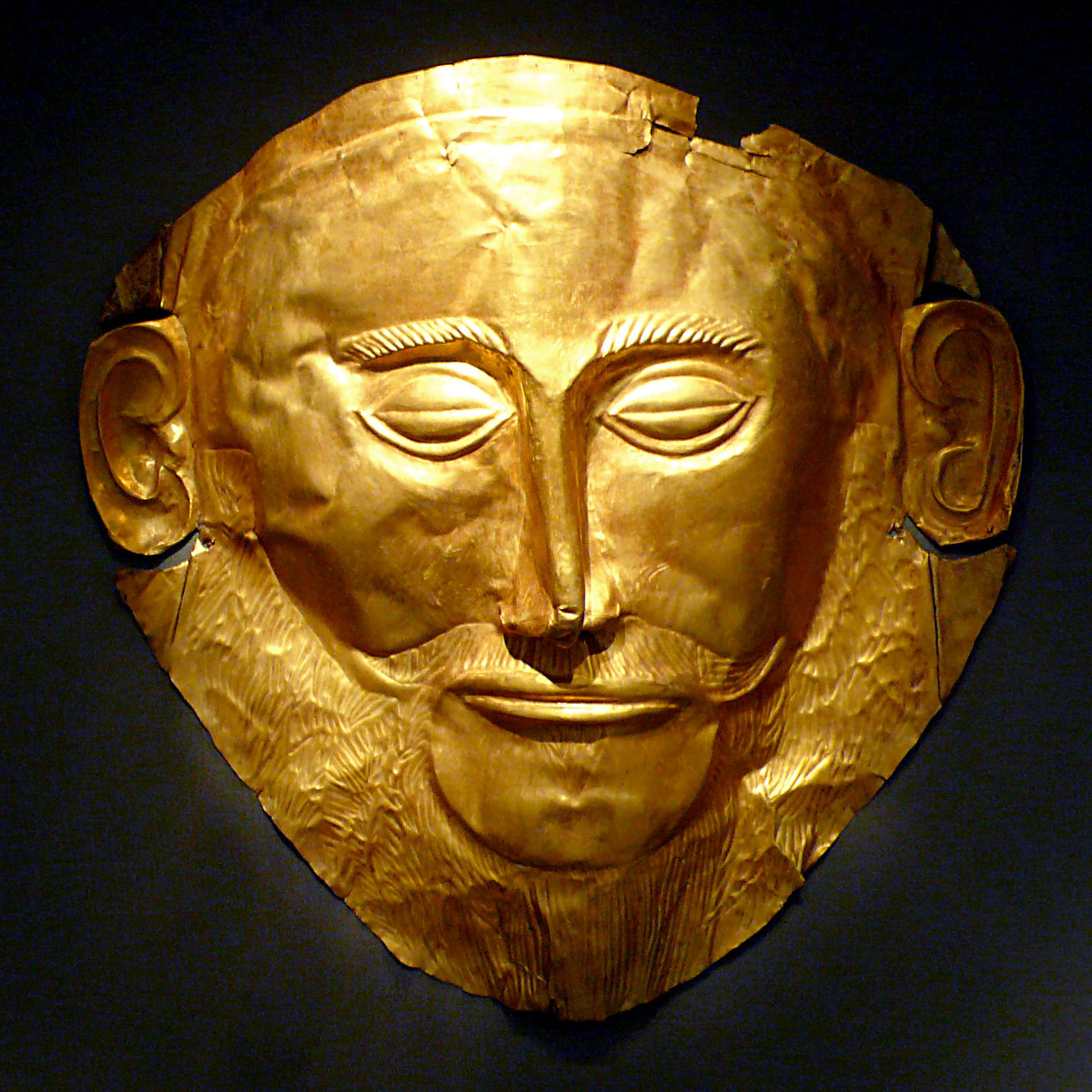
Die Goldmaske des Agamemnon wurde im Jahre 1876 von dem deutschen Archäologen Heinrich Schliemann bei Ausgrabungen im griechischen Mykene entdeckt. Sie soll nach Meinung Schliemanns den sagenhaften König Agamemnon, einen Helden des Trojanischen Krieges, darstellen.
阿伽门农的面具,是由海因里希·施里曼在1876年对迈锡尼文明的考古中发现,整个面具由黄金制成。高26厘米。制作年份上为公元前1550至公元前1500左右。现藏于雅典国家考古博物馆。海因里希·施里曼根据古希腊传说中的阿伽门农而给这个面具命名为阿伽门农的面具。但现代的观点否认这种说法,认为面具作成年代早过阿伽门农所处的时代大概三百年。

 History
History
 E 2500 - 2000 BC
E 2500 - 2000 BC

 History
History
 F 2000 - 1500 BC
F 2000 - 1500 BC

 History
History
 G 1500 - 1000 BC
G 1500 - 1000 BC

 History
History
 H 1000 - 500 BC
H 1000 - 500 BC
 Mesopotamian civilization
Mesopotamian civilization

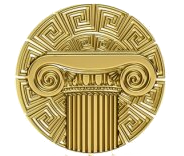 Civilization
Civilization
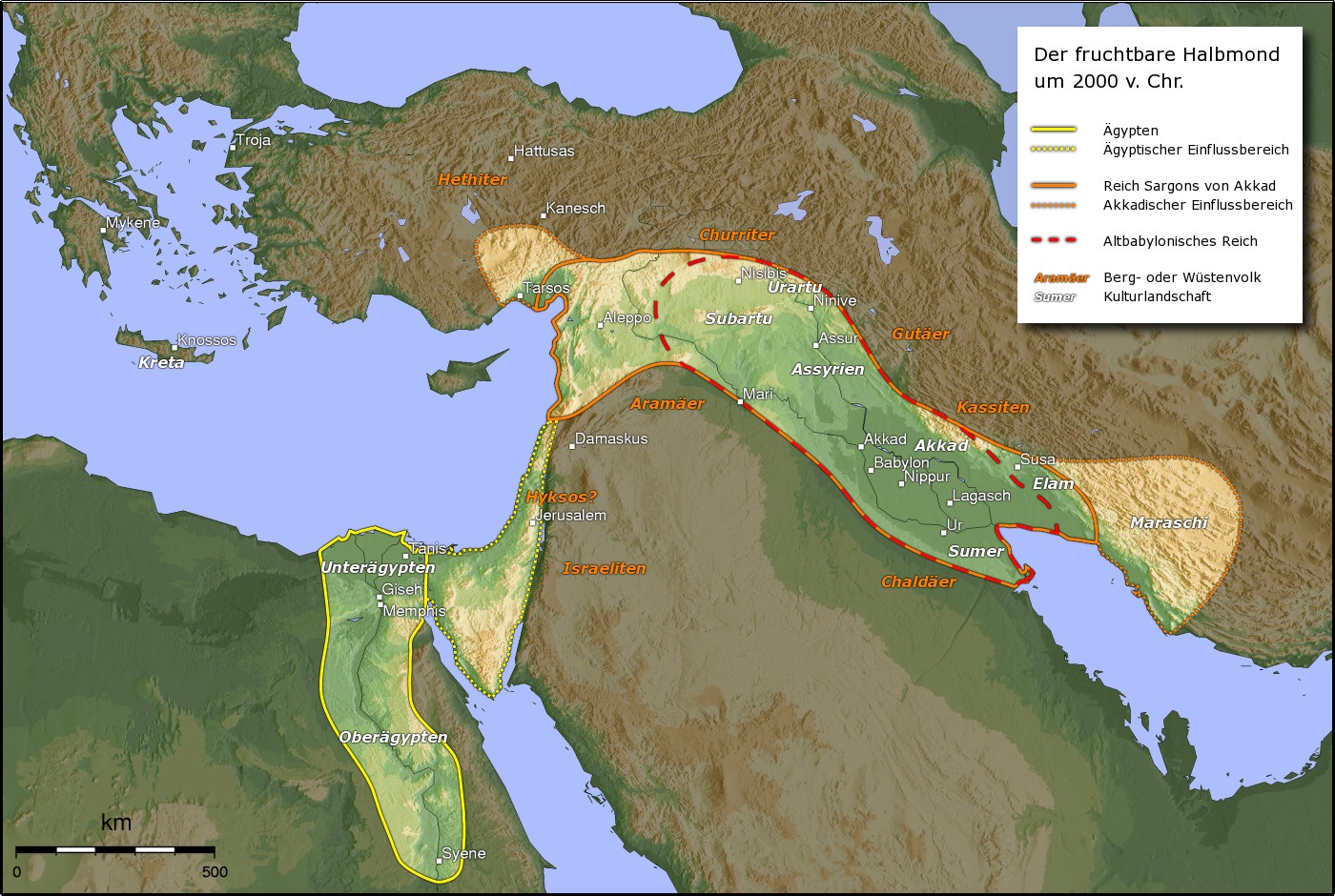
Das Reich Elam (sumerisch NIM.MAKI, akkadisch KURElammatum; griechisch Ἐλυμαία Elymaía oder Ἐλυμαΐς Elymaḯs) mit der Hauptstadt Susa (bzw. Schusim) lag östlich des Tigris in einem Gebiet, das heute Chusistan (im heutigen Iran) genannt wird. In seiner wechselvollen Geschichte – zwischen 3000 und 640 v. Chr. – wurde es immer wieder von den Mächten des Zweistromlandes (Sumerer, Akkader, Babylonier, Assyrer) erobert und fiel seinerseits häufig in Mesopotamien ein.
Der Landesname Elam entstammt der griechischen Bezeichnung Elymaía, die wiederum dem hebräischen Wort Elam entlehnt wurde. Die Eigenbezeichnung war Haltamti oder Hatamti und bedeutet „Land der Könige, Fürstenland“.
埃兰(英语:Elam),又译以拦、厄蓝或伊勒姆,是亚洲西南部的古老君主制城邦国家,位于今天伊朗的西南部,波斯湾北部,底格里斯河东部,现为伊朗的胡齐斯坦及伊拉姆省。埃兰是伊朗的最早文明,起源于伊朗高原以外的埃兰地区。一般认为埃兰国名出自境内哈尔答第城邦(意谓“神的国家”)。此名在《圣经》广为流传,故沿用至今。公元前三千年以前,在底格里斯河东岸建国,以善战的人民著称,圣经记载是诺亚儿子闪的儿孙及其后裔。
埃兰地区曾有许多君主制城邦国,其中最重要的有阿万(Awan)、苏萨、西马什(Simash)、安善(Anshan)等。
埃兰历史可以分为三个时期:古埃兰时期、中埃兰时期与新埃兰时期。
エラム (Elam) は古代オリエントで栄えた国家、または地方の名。紀元前3200年頃から紀元前539年までの間、複数の古代世界の列強国を出現させた。
エラムと呼ばれたのは、メソポタミアの東、現代のフーゼスターンなどを含むイラン高原南西部のザグロス山脈沿いの地域である。エラム人自身は自らをハルタミ (Haltami) と呼び、土地を指す際にはハルタムティ(Haltamti、後に訛ってアタムティAtamti)と呼んだ。シュメール語のエラムはこれの転訛したものである[1]。メソポタミアという古代文明世界の中心地に隣接したために、その文化的影響を強く受けたが、砂漠や湿地帯によって交通が困難であったために、政治的にはイラン高原地帯との関わりが深かった。エラム人は系統不明の言語エラム語を話す人々であり、メソポタミアでウルク古拙文字(楔形文字の元になったと考えられている絵文字)が発明されてから程なく、エラムでも原エラム文字と呼ばれる絵文字が発明された。この原エラム文字で書かれた文章は現在のアフガニスタンに近い地域からも見つかっており、エラム文化はイラン高原各地に影響を与えていたと考えられる。また、ほぼ同時代にエラム楔形文字も使われているが、それらの関係は全く解明されていない。メソポタミアの王朝はたびたびエラムに侵入して、これを支配下に置いた。一方でエラム人もメソポタミアへの介入を繰り返し、バビロニアの王朝をいくつも滅ぼしている。紀元前2000年紀に入ると、エラム人も楔形文字を使って記録を残すようになり、多くの情報がわかる。エラムの歴史で中心的役割を果たした都市はアンシャン、そしてスサである。スサを中心とした地方はギリシア人たちにはスシアナとよばれた。エラム人の残した文化や政治制度は、メディアやペルシアに大きな影響を及ぼした。
エラム人は、オリエントのほかの地域とは異なる独特の相続制度を持っていた。即ち、王位は親子ではなく、まず兄弟によって相続されていくのである。この相続制度はかなり後の時代にまで継承され、異民族の侵入によっても基本的に変化しなかった。
Elam (/ˈiːləm/; Elamite: ????? haltamti; Sumerian: ??? NIM.MAki; Hebrew: עֵילָם ʿÊlām) was an ancient Pre-Iranian civilization centered in the far west and southwest of what is now modern-day Iran, stretching from the lowlands of what is now Khuzestan and Ilam Province as well as a small part of southern Iraq. The modern name Elam stems from the Sumerian transliteration elam(a), along with the later Akkadian elamtu, and the Elamite haltamti. Elamite states were among the leading political forces of the Ancient Near East.[1] In classical literature Elam was also known as Susiana (US: /ˌsuːʒiˈænə/ UK: /ˌsuːziˈɑːnə/; Ancient Greek: Σουσιανή Sousiānḗ), a name derived from its capital Susa.[2]
Elam was part of the early urbanization during the Chalcolithic period (Copper Age). The emergence of written records from around 3000 BC also parallels Sumerian history, where slightly earlier records have been found.[3][4] In the Old Elamite period (Middle Bronze Age), Elam consisted of kingdoms on the Iranian plateau, centered in Anshan, and from the mid-2nd millennium BC, it was centered in Susa in the Khuzestan lowlands.[5] Its culture played a crucial role during the Persian Achaemenid dynasty that succeeded Elam, when the Elamite language remained among those in official use. Elamite is generally considered a language isolate unrelated to the much later arriving Persian and Iranic languages. In accordance with geographical and archaeological matches, some historians argue that the Elamites comprise a large portion of the ancestors of the modern day Lurs,[6][7] whose language, Luri, split from Middle Persian.
L'Élam est un ancien pays occupant la partie sud-ouest du plateau Iranien, autour des actuelles provinces du Khouzistan et du Fars, qui correspondent à ses deux principales régions, celle de Suse et celle d'Anshan/Anzan. Le pays élamite, attesté par des textes allant de la fin du IVe millénaire av. J.‑C. au Ier millénaire ap. J.-C., recouvrit des réalités géographiques et politiques qui différent pendant sa longue histoire. Il fut parfois divisé en plusieurs entités politiques, surtout jusqu'au IIIe millénaire av. J.‑C., mais aussi plusieurs fois par la suite, et il connut par contre des phases d'unification, sous l'impulsion de puissantes dynasties (notamment les Sukkalmah, Igehalkides, Shutrukides), surtout au IIe millénaire av. J.‑C. À partir du Ier millénaire av. J.‑C., l'Élam se réduit à sa partie occidentale, autour de la Susiane, la partie orientale étant occupée par les Perses, qui lui donnèrent le nom qu'elle a gardé depuis (Perse/Fars). Le pays élamite perdit son autonomie politique après son combat contre l'Assyrie et sa conquête par les Perses, même s'il semble avoir revécu plusieurs siècles plus tard, à travers le royaume d'Élymaïde. Des survivances de cet ancien pays et de son peuple semblent encore attestées jusqu'au début du IIe millénaire ap. J.-C.
L'histoire de l'Élam est difficilement dissociable de celle de la Mésopotamie voisine, qui exerça sur ces territoires une forte influence. Les sources mésopotamiennes sont essentielles pour redécouvrir la civilisation élamite, complétées par celles provenant de sites de la région, avant tout de Suse. Elles laissent apparaître un ensemble de régions hétérogènes présentant des originalités culturelles (perceptibles dans le culte religieux et l'art), mais beaucoup d'aspects restent obscurs en l'état actuel des connaissances scientifiques (par exemple l'organisation politique, les activités de production, la mythologie).
Elam è il nome convenzionale con cui si fa riferimento ad una civiltà sviluppatasi dal III al I millennio a.C. nell'area corrispondente all'attuale Iran occidentale, nelle regioni del Khuzistan e del Fars. I due centri di riferimento furono Susa, nell'estensione sud-orientale del bassopiano mesopotamico, e Anshan, identificato con il sito di Tall-i Malyan, nella piana di Marvdasht (a nord-est di Shiraz), la stessa in cui più tardi fu costruita Persepoli.
Elam (en elamita antiguo Haltamti;1 akkadio Elamtu; persa antiguo Hujiyā; persa moderno تمدن عیلام ―‘cultura de Elam’―), se situaba al este de Sumeria y Acad, en el actual suroeste de Irán. Los elamitas llamaban a su país Haltamti (en elamita tardío, Atamti), del cual sus vecinos acadios adaptaron como Elamtu. El alto Elam fue posteriormente más y más identificado por su baja capital, Susa, y geógrafos posteriores a Ptolomeo la llamaron Susiana. El término del antiguo persa Hujiyā sobrevive en el topónimo Juzestán, que es la provincia junto con la de Lorestán en la que se sitúan los restos del antiguo Elam. En diversos períodos existieron diversos imperios elamitas y en otros momentos estuvieron sometidos a imperios vecinos.
Excavaciones realizadas en Susa han proporcionado numerosos documentos escritos con caracteres cuneiformes que permiten reconstruir la más antigua historia y religión de los elamitas. El idioma elamita ―según se ha establecido a partir de los registros cuneiformes― no está relacionado con los cuatro grupos lingüísticos vecinos: camito-semítico, sumerio e indoeuropeo (en concreto, del grupo iranio temprano). Algunos expertos creen que la lengua de los elamitas está emparentada con las actuales lenguas drávidas del sur de la India (ver lenguas elamo-drávidas).23 Sin embargo, aun es oscura la relación de los elamitas con otras naciones conocidas.
Элам (также Елам[1]; шум. Ним, аккад. Эламту, самоназвание — Haltamti) — историческая область и древнее государство (3 тысячелетие — сер. VI в. до н. э.) на юго-западе современного Ирана (провинции Хузестан и Лурестан).

Babylon oder Babel[1] war als Hauptstadt Babyloniens eine der wichtigsten Städte des Altertums. Sie lag am Euphrat, etwa 90 km südlich Bagdads im heutigen Irak (Provinz Babil). Die Ruinen der Stadt sind unter anderem von Robert Koldewey Anfang des 20. Jahrhunderts teilweise freigelegt worden. Der Ort war die Hauptstadt des gleichnamigen Stadtstaates, der zeitweise über weite Teile des südlichen Zweistromlandes herrschte.
Die Blütezeit der antiken „Weltstadt“ Babylon lag zwischen 1800 und 140 v. Chr.
巴比伦(阿拉伯语:بابل Bābil;阿卡德语:Bābili(m)[2];苏美尔语:KÁ.DINGIR.RAKI[2];希伯来语:בָּבֶל Bāḇel[2];古希腊语:Βαβυλών Babylṓn)原本是一个闪语族阿卡德人的城市。它的历史可以追溯到公元前2334年的阿卡德帝国。2019年获列入世界文化遗产。
它起初是一个低级行政中心。公元前1894年在由移民者建立的阿摩利人王朝的手里巴比伦才成为一个独立的城邦。巴比伦人在他们的历史上相对更多地被其它移民王朝统治,例如加喜特人、阿拉米人、埃兰人与迦勒底人。两河流域的同胞亚述人也统治过巴比伦。
巴比伦城市遗址在今天伊拉克巴比伦省的希拉被发现,位于巴格达以南约八十五公里处。这个举世闻名城市的遗址地处底格里斯河和幼发拉底河之间肥沃的美索不达米亚平原上,现在仅留存着由破损的土砖建筑物构成的大型土墩和碎片。城市沿着幼发拉底河建造,被左、右河岸平分成两部分,配有陡峭的河堤来抵御季节性的洪水。
现存的历史资料显示,巴比伦最初是一个小城镇,在公元前二千年初变得兴盛。在阿摩利人巴比伦第一王朝于公元前1894年兴起时它作为一个小城邦获得独立。巴比伦宣称自己是苏美尔-阿卡德城邦——埃利都的继承者。尽管在那时候它还是一个小城市,但是它让美索不达米亚平原上的“圣城”尼普尔黯然失色。大约也是这个时候,也就是公元前十八世纪左右,一个名叫汉谟拉比的亚摩利人国王第一次建立巴比伦帝国。从这时候开始美索不达米亚平原的南部被人称作巴比伦尼亚,巴比伦的规模至此开始快速发展,日益膨胀。
巴比伦帝国随着灭亡而快速瓦解。之后,巴比伦在亚述人、加喜特人和埃兰人的统治下度过漫长的岁月。在被亚述人毁灭并重建后,巴比伦于公元前608年到公元前539年之间成为新巴比伦王国的所在地。这个帝国由来自美索不达米亚平原东南角的迦勒底人建立。新巴比伦帝国最后一个国王是一个来自美索不达米亚平原北部的亚述人。巴比伦的空中花园是古代世界七大奇迹之一。巴比伦在衰落后又被阿契美尼德帝国、塞琉古王朝、帕提亚帝国、罗马帝国和萨珊王朝统治。

 History
History
 J 0 - 500 AD
J 0 - 500 AD

 History
History
 I 500 - 0 BC
I 500 - 0 BC

 History
History
 H 1000 - 500 BC
H 1000 - 500 BC

 History
History
 G 1500 - 1000 BC
G 1500 - 1000 BC

 History
History
 E 2500 - 2000 BC
E 2500 - 2000 BC

 History
History
 F 2000 - 1500 BC
F 2000 - 1500 BC
 Syria
Syria

 World Heritage
World Heritage

 Civilization
Civilization

Palmyra (arabisch تدمر Tadmur; aramäisch ܬܕܡܘܪܬܐ Tedmurtā; hebräisch תדמור Tadmor), gegenwärtig auch Tadmor genannt, ist eine antike Oasenstadt im heutigen Gouvernement Homs in Syrien. Sie liegt auf dem Gebiet der modernen Stadt Tadmor, die vor dem Bürgerkrieg etwa 51.000 Einwohner hatte.
Die ersten archäologischen Funde stammten aus der Jungsteinzeit. Die erste schriftliche Erwähnung der Stadt selbst erfolgte in altorientalischer Zeit: Sie wurde in den Annalen mehrerer assyrischer Könige und im Alten Testament erwähnt. Palmyra war später Teil des Seleukidenreiches und erlebte seine Blütezeit nach der Annexion durch das Römische Reich im 1. Jahrhundert n. Chr.
Palmyra verfügte über eine gewisse Autonomie innerhalb des Römischen Reiches und wurde Teil der Provinz Syria. Die Metropole besaß einen eigenen Senat, der für öffentliche Arbeiten und die lokale Miliz zuständig war, und ein unabhängiges Steuersystem. Im 3. Jahrhundert wurde sie zur colonia erhoben. In der Zeit der Reichskrise des 3. Jahrhunderts gewann die Stadt stark an politischer Bedeutung und wurde 270 kurzzeitig unabhängig. Das Reich der Stadt stellte einen bedeutenden Machtfaktor im Vorderen Orient dar. Palmyra wurde jedoch 272 von römischen Truppen wieder erobert und die Stadt 273 nach einer gescheiterten zweiten Rebellion weitgehend zerstört.
Palmyra lag an einer wichtigen Karawanenstraße in Syrien, auf halber Strecke von Damaskus über die römische Oase Al-Dumair und weiter über das Kastell Resafa bis zum Euphrat. Inmitten der syrischen Wüste spenden zwei Quellen Wasser, mit dem die noch immer erhaltenen Palmengärten im Süden und Osten der Stadt bewässert werden. Der Reichtum der Stadt ermöglichte die Errichtung von monumentalen Bauprojekten. Im dritten Jahrhundert war die Stadt eine wohlhabende Metropole und zu einem regionalen Zentrum des Nahen Ostens aufgestiegen. Die Palmyrer gehörten zu den renommierten Händlern, etablierten Stationen entlang der Seidenstraße und betrieben im gesamten Reich Handel. Die Sozialstruktur der Stadt war tribal und ihre Bewohner sprachen mit dem Palmyrenischen Dialekt des Aramäischen eine eigene Sprache. Griechisch wurde für kommerzielle und diplomatische Zwecke verwendet. Die Kultur von Palmyra, die durch die Römer, Griechen und Perser beeinflusst wurde, ist in der Region einzigartig. Die Einwohner verehrten lokale Gottheiten und mesopotamische und arabische Götter.
Die Stadt gehört seit der Vertreibung der Osmanen 1918 zu Syrien als eigenständigem Staat. Sie beherbergt heute unverwechselbare Kunst und Architektur und wurde 1980 zum UNESCO-Weltkulturerbe erklärt.Palmyra (/ˌpɑːlˈmaɪrə/; Palmyrene: ![]() Tadmor; Arabic: تَدْمُر Tadmur) is an ancient Semitic city in present-day Homs Governorate, Syria. Archaeological finds date back to the Neolithic period, and documents first mention the city in the early second millennium BC. Palmyra changed hands on a number of occasions between different empires before becoming a subject of the Roman Empire in the first century AD.
Tadmor; Arabic: تَدْمُر Tadmur) is an ancient Semitic city in present-day Homs Governorate, Syria. Archaeological finds date back to the Neolithic period, and documents first mention the city in the early second millennium BC. Palmyra changed hands on a number of occasions between different empires before becoming a subject of the Roman Empire in the first century AD.
The city grew wealthy from trade caravans; the Palmyrenes became renowned as merchants who established colonies along the Silk Road and operated throughout the Roman Empire. Palmyra's wealth enabled the construction of monumental projects, such as the Great Colonnade, the Temple of Bel, and the distinctive tower tombs. Ethnically, the Palmyrenes combined elements of Amorites, Arameans, and Arabs. The city's social structure was tribal, and its inhabitants spoke Palmyrene (a dialect of Aramaic), while using Greek for commercial and diplomatic purposes. Greco-Roman culture influenced the culture of Palmyra, which produced distinctive art and architecture that combined eastern and western traditions. The city's inhabitants worshiped local Semitic deities, Mesopotamian and Arab gods.
By the third century AD Palmyra had become a prosperous regional center. It reached the apex of its power in the 260s, when the Palmyrene King Odaenathus defeated Persian Emperor Shapur I. The king was succeeded by regent Queen Zenobia, who rebelled against Rome and established the Palmyrene Empire. In 273, Roman emperor Aurelian destroyed the city, which was later restored by Diocletian at a reduced size. The Palmyrenes converted to Christianity during the fourth century and to Islam in the centuries following the conquest by the 7th-century Rashidun Caliphate, after which the Palmyrene and Greek languages were replaced by Arabic.
Before AD 273, Palmyra enjoyed autonomy and was attached to the Roman province of Syria, having its political organization influenced by the Greek city-state model during the first two centuries AD. The city became a Roman colonia during the third century, leading to the incorporation of Roman governing institutions, before becoming a monarchy in 260. Following its destruction in 273, Palmyra became a minor center under the Byzantines and later empires. Its destruction by the Timurids in 1400 reduced it to a small village. Under French Mandatory rule in 1932, the inhabitants were moved into the new village of Tadmur, and the ancient site became available for excavations.
Palmyre (Παλμύρα / Palmúra en grec ancien, تدمر / tadmor en arabe) est une oasis du désert de Syrie, à 210 km au nord-est de Damas, où se situe un site historique très riche en ruines archéologiques, et la ville moderne de Tadmor.
Le site est classé patrimoine mondial de l'UNESCO depuis 1980, puis classé « en péril » pendant la guerre civile syrienne.
Palmira (in palmireno ![]() ; in arabo: تدمر), chiamata anche la Sposa del Deserto, fu in tempi antichi una delle più importanti città della Siria.
; in arabo: تدمر), chiamata anche la Sposa del Deserto, fu in tempi antichi una delle più importanti città della Siria.
Palmira (en árabe تدمر Tadmor1 o Tadmir) fue una antigua ciudad situada en el desierto de Siria, en la actual provincia de Homs a 3 km de la moderna ciudad de Tedmor2 o Tadmir, (versión árabe de la misma palabra aramea "palmira", que significa "ciudad de los árboles de dátil"). En la actualidad sólo persisten sus amplias ruinas que son foco de una abundante actividad turística internacional. La antigua Palmira fue la capital del Imperio de Palmira bajo el efímero reinado de la reina Zenobia, entre los años 268 - 272.
Palmira fue elegida como Patrimonio de la Humanidad en 1980. El 20 de junio de 2013, la Unesco incluyó a todos los sitios sirios en la lista del Patrimonio de la Humanidad en peligro para alertar sobre los riesgos a los que están expuestos debido a la Guerra Civil Siria.3

Das Tal der Könige (arabisch وادي الملوك, DMG Wādī al-Mulūk; auch Wadi el-Muluk, Bibân el-Molûk, Biban el-Muluk) – gelegen in der Nähe des altägyptischen Theben, heute etwa 5 km nordwestlich des Zentrums der oberägyptischen Stadt Luxor – war eine Nekropole im Alten Ägypten, in der bis heute 64 Gräber und Gruben aufgefunden wurden. „KV65“ ist eine Radaranomalie, die als Grab gedeutet wird, aber bis heute nicht weiter untersucht wurde. Altägyptisch wurde das Tal der Könige als Sechet-aat (Sḫt ˁ3t), „großes Feld“, bezeichnet.[2]
Im Tal der Könige sind insbesondere die Gräber der Herrscher des Neuen Reichs (ca. 1550 bis 1069 v. Chr.[3], 18. bis 20. Dynastie) zu finden. Das Tal befindet sich in Theben-West, gegenüber von Karnak, am Rand der Wüste und ist gesäumt von hohen Bergen, namentlich von der natürlichen Felspyramide el Korn oder el-Qurn („das Horn“). Nahezu das gesamte Gebiet von Theben-West bildet eine riesige Nekropole. Südlich davon liegt das Tal der Königinnen und dazwischen die Nekropolen Dra Abu el-Naga, el-Chocha, al-Asasif, Deir el-Bahari, Scheich Abd el-Qurna, Qurnet Murrai und Deir el-Medina mit den „Gräbern der Noblen“.
Trotz jahrtausendelanger Aktivität von Grabräubern und Plünderern lieferte das Tal der Könige den Ägyptologen der Neuzeit noch zahlreiche höchst wertvolle Grabungsfunde. Unter anderem wurde hier im Jahr 1922 von Howard Carter das weitgehend unversehrte Grab des Tutanchamun (KV62) entdeckt.
帝王谷(阿拉伯语:وادي الملوك Wādī al Mulūk; 科普特语:ϫⲏⲙⲉ[1];英语:Valley of the Kings)或被称为国王之门谷[2](阿拉伯语:وادي أبواب الملوكWādī Abwāb al-Mulūk')是位于埃及的一个山谷,埋葬古埃及新王国时期18到20王朝的法老和贵族而闻名。[3][4]
帝王谷位于底比斯(现卢克索)对面的尼罗河西岸[5][6] ,位于底比斯墓地的中心地带。干河由两个山谷组成:东谷(大部分皇家陵墓所在的地方)和西谷(猴子谷)。[7][8] 随着2005年发现一个新墓室和2008年发现另外两个墓穴入口,帝王谷已知有63座墓葬和墓室[9](大小从简单的KV54到拥有超过120个房间)[10]。它是埃及新王国主要王室成员以及一些特权贵族的主要墓地。始于图特摩斯一世时期终于拉美西斯十世或十一世时期,皇家陵墓装饰著埃及神话中的场景,并提供有关该时期信仰和丧葬习俗的线索。几乎所有的陵墓似乎都在古代被打开和抢劫过。
自十八世纪末以来,帝王谷地区一直是考古和埃及学探索的重点,其墓葬和规模继续激发着考古学家对此的研究和兴趣。自1920年代以来,该山谷以发现图坦卡蒙之墓而闻名,成为世界上最著名的考古遗址之一。1979年,它与底比斯墓地的其余部分被联合国教科文组织登录为世界文化遗产[11]。当代,山谷继续进行勘探、挖掘和保护,最近开设了一个新的旅游中心。

Theben (altägyptisch im Neuen Reich Waset, sonst auch: Niut oder Niut-reset) war eine am Nil liegende altägyptische Stadt in Oberägypten. Homer nannte es das hunderttorige Theben in seiner Ilias (9. Gesang, V. 3. Gesang); das griechische Theben in Böotien nannte er dagegen siebentorig in der Odyssee (11. Gesang, V. 2. Gesang).
An der Stelle Thebens war zu Ende des 19. Jahrhunderts nur noch ein ausgedehntes Ruinenfeld zu beiden Seiten des Nils vorhanden. Das Tempel- und Stadtgebiet lag in einer Schwemmebene, die durch wiederkehrende künstliche Aufschüttungen immer weiter anwuchs. Als Schutzmaßnahme gegen die Nilflut erfolgte zusätzlich der Bau von Deichanlagen, die insbesondere die Tempelanlagen schützen sollten. Heute befindet sich in einem Teil von Theben-Ost eines der touristischen Zentren Ägyptens, die Stadt Luxor. Seit 1979 ist Theben in die UNESCO-Liste des Weltkulturerbes eingetragen.
Von den Griechen der Ptolemäerzeit ist der Name Θῆβαι Thēbai (Theben) überliefert, aber auch die Bezeichnung Διὸς Πόλις Μεγάλη Diòs Pólis Megálē ‚große Stadt des Zeus‘, woraus in der Zeit des Römischen Reiches die Benennungen Thebae beziehungsweise Diospolis Magna abgeleitet wurden. Das Gebiet von Theben umfasste spätestens seit dem Neuen Reich beide Nilseiten; es gliedert sich in Theben-Ost und Theben-West. Daneben existierte als weiterer Ort das nördliche „unterägyptische Theben“ in Tell el-Balamun.

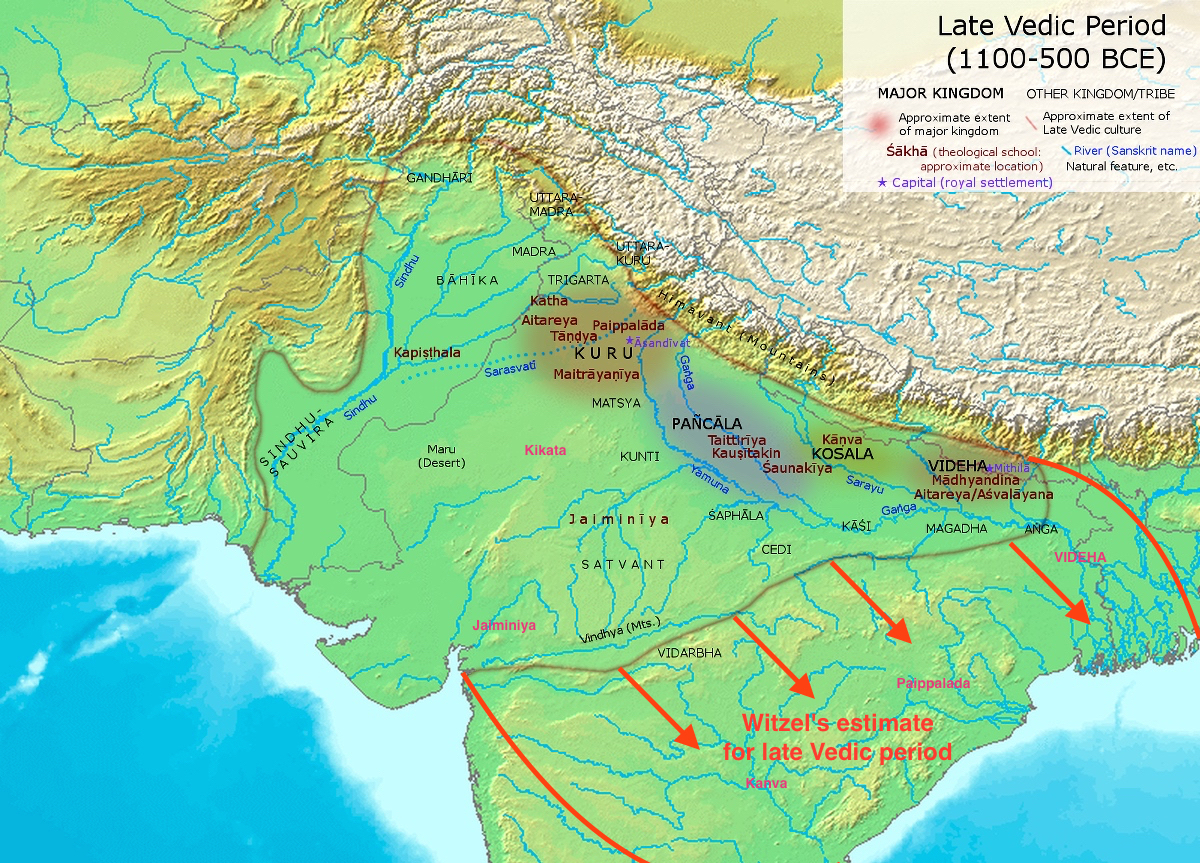
Die Bedeutung des Veda (Veda, wörtlich: Wissen) ist in vielen Richtungen des Hinduismus sehr groß. Viele Schriften des Hinduismus nehmen auf ihn Bezug, auch in Form von Kommentaren. Die genaue Abgrenzung, welche Texte zum Veda gehören, ist strittig. Manchmal werden auch die späteren hinduistischen Schriften, wie die Puranas oder Agamas als „vedische Literatur“ bezeichnet. Der Veda selbst gilt als von Weisen „gehörtes“ Wissen (Shruti) und genießt höchste Autorität. Bei den Veden (im engeren Sinne) handelt es sich um Texte, die ursprünglich mündlich über Jahrhunderte in Sanskrit in Form von Liedern und Rezitationen überliefert und erst später ab dem 5. Jahrhundert n. Chr. schriftlich erfasst wurden. Im 19. Jahrhundert übersetzten Indologen wie Max Müller sie in verschiedene europäische Sprachen. Diese Übersetzungen sind unter orthodoxen Hindus nicht unumstritten, da der Veda als unübersetzbar gilt. Aufgrund der in gedruckter Form vorliegenden Übersetzungen wurde der Veda auch in Indien unter Hindus bekannter, als dies in früheren Zeiten je der Fall war.
In der heutigen religiösen Praxis spielen nicht alle Teile des Veda eine gleich große Rolle. In den älteren Teilen, insbesondere im Rigveda, sind viele Rituale oder Opfer beschrieben, die später an Bedeutung verloren – wie das Pferdeopfer (ashvamedha) – oder die Verehrung der Gottheiten Varuna und Agni und das Trinken und die Verehrung von Soma. Andere Hymnen fanden Eingang in die Ritualwelt der Hindus, wo sie in den Pujas (Andachten) zusammen mit Hymnen in der jeweiligen Landessprache gesungen werden.
吠陀文化(约前16世纪—前7世纪)是指吠陀经典所记载和反映的印度历史时期文化。透过吠陀经典的古梵文史料,所谓的吠陀经典即指四吠陀——梨俱吠陀、娑摩吠陀、夜柔吠陀、阿闼婆吠陀,加上梵书和奥义书又称六吠陀。古代印度由奥族、达罗毗荼人及古印度人等多族,逐渐形成其思想与文化。当时,由古印度婆罗门主宰的社会形成吠陀文化,并延续古婆罗门教。吠陀文化反映当时印度人日常生活的写照以及人们对神灵天上的美好向往,后期的吠陀思想出现提倡酒的文化,开始鼓励人们饮酒,后期婆罗门教徒的祭司们甚至认为,饮酒可以让人获得解脱、重新回到大梵天与梵天合一的最佳方法。
The Vedic period, or Vedic age (c. 1500 – c. 500 BCE), is the period in the history of the northern Indian subcontinent between the end of the urban Indus Valley Civilisation and a second urbanisation which began in the central Gangetic Plain c. 600 BCE. It gets its name from the Vedas, which are liturgical texts containing details of life during this period that have been interpreted to be historical[1] and constitute the primary sources for understanding the period. These documents, alongside the corresponding archaeological record, allow for the evolution of the Vedic culture to be traced and inferred.[2]
The Vedas were composed and orally transmitted with precision by speakers of an Old Indo-Aryan language who had migrated into the northwestern regions of the Indian subcontinent early in this period. The Vedic society was patriarchal and patrilineal. Early Vedic Aryans were a Late Bronze Age society centred in the Punjab, organised into tribes rather than kingdoms, and primarily sustained by a pastoral way of life. Around c. 1200–1000 BCE, Vedic Aryans spread eastward to the fertile western Ganges Plain and adopted iron tools which allowed for clearing of forest and the adoption of a more settled, agricultural way of life. The second half of the Vedic period was characterised by the emergence of towns, kingdoms, and a complex social differentiation distinctive to India,[2] and the Kuru Kingdom's codification of orthodox sacrificial ritual.[3][4] During this time, the central Ganges Plain was dominated by a related but non-Vedic Indo-Aryan culture. The end of the Vedic period witnessed the rise of true cities and large states (called mahajanapadas) as well as śramaṇa movements (including Jainism and Buddhism) which challenged the Vedic orthodoxy.[5]
The Vedic period saw the emergence of a hierarchy of social classes that would remain influential. Vedic religion developed into Brahmanical orthodoxy, and around the beginning of the Common Era, the Vedic tradition formed one of the main constituents of the so-called "Hindu synthesis".[6]
Archaeological cultures identified with phases of Vedic material culture include the Ochre Coloured Pottery culture, the Gandhara grave culture, the Black and red ware culture and the Painted Grey Ware culture.[7]
La Période védique ou Âge védique est la période de l’histoire de l'Inde où les textes hindouistes canoniques, tels que les quatre védas, les Brāhmaṇas, les Āraṇyaka et les Upaniṣad ont été composés en sanskrit védique, une forme du sanskrit. La culture associée à cette période, parfois désignée comme civilisation védique, s’est développée au nord et au nord-ouest du sous-continent indien. La période védique étant, par définition, celle où s’est développée la littérature védique, on peut la situer au IIe millénaire av. J.-C. et au Ier millénaire av. J.-C. jusqu’au VIe siècle av. J.-C..
Au cours de la première phase de la période, on voit apparaître la formation de divers royaumes de l’Inde ancienne. La dernière phase, à partir de 700 avant notre ère, voit la montée des Mahajanapadas. S’ensuivent l’âge d’or de l’hindouisme et de la littérature sanskrite classique, l’Empire Maurya à partir de 320 avant notre ère puis les moyens royaumes indiens tels que le Royaume indo-grec.
La civiltà vedica è la cultura associata al popolo che compose i testi religiosi conosciuti come Veda, nel subcontinente indiano. Il territorio allora occupato da quella civiltà corrisponde all'attuale regione del Punjab, tra India e Pakistan, alla Provincia della Frontiera del Nord Ovest del Pakistan e alla maggior parte dell'India settentrionale. Secondo la maggioranza degli studiosi, la civiltà vedica si sviluppò nel II e nel I millennio a.C., sebbene la tradizione indù proponga una data più remota, nel VI millennio a.C. Il sanscrito vedico e la religione vedica persistettero fino al VI secolo a.C., quando la cultura cominciò a trasformarsi nelle forme classiche dell'induismo. Questo periodo della storia dell'India è conosciuto come Era Vedica. Nella sua fase tarda (a partire dal 700 a.C.), assistette al sorgere dei Mahajanapadas (i sedici grandi regni indiani dell'Età del Ferro); all'Era Vedica seguì l'Età dell'Oro dell'induismo e della letteratura classica in sanscrito, ossia il periodo dell'Impero Maurya (a partire dal 325 a.C.) e dei regni medi dell'India.
Sulla base di prove linguistiche, la maggioranza degli studiosi ritiene che popoli di lingua indo-ariana migrarono verso l'India settentrionale, nell'ondata iniziale dell'espansione indo-iraniana a partire dall'Asia centrale. Quindi, secondo questa teoria, gli Indo-Ariani si sarebbero amalgamati con i superstiti della civiltà della valle dell'Indo dando appunto origine alla civiltà vedica. Gli studiosi divergono tuttavia sulla questione se la migrazione verso il subcontinente indiano abbia avuto carattere pacifico o violento (invasione).
El periodo védico (o era védica) es el período en el que se compusieron los Vedas, los textos sagrados más antiguos de los indoarios. Basándose en evidencia literaria, los estudiosos ubican esta época en el periodo que va aproximadamente entre el 1500 a. C. y terminó en el año 327 a. C.
La cultura relacionada con este periodo, a veces llamada «cultura védica», está centrada en las zonas norte y noroeste del subcontinente indio. Su fase más antigua vio la formación de varios reinos. En su fase más moderna (desde el 600 a. C.) vio el auge de los 16 pequeños reinos Majayanapadas, y que fueron sucedidos por el Imperio mauria (desde ca. 320 a. C.) la edad de oro, la era clásica de la literatura sánscrita, y los reinos medios de la India.
Веди́йская цивилиза́ция — индоарийская культура, ассоциируемая с Ведами, самыми ранними источниками об истории Индии. Большинство учёных помещают ведийскую цивилизацию в период от второго до первого тысячелетия до н. э., хотя некоторые индийские учёные отводят начало ведийской цивилизации к VII тысячелетию до н. э. Ведийский язык продолжал употребляться до V века до н. э., когда культура стала приобретать классические формы индуизма.
 *Mediterranean Sea
*Mediterranean Sea
 Egypt
Egypt

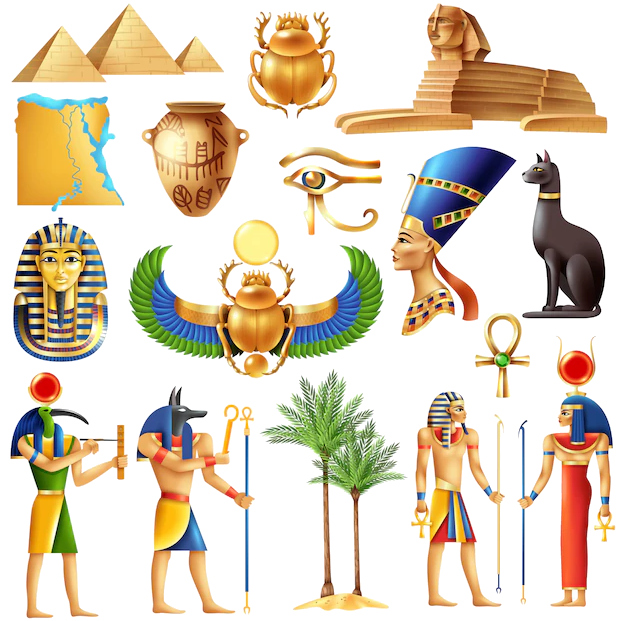 Ancient Egypt
Ancient Egypt

 History
History
 B 5000 - 4000 BC
B 5000 - 4000 BC

 History
History
 D 3000 - 2500 BC
D 3000 - 2500 BC

 History
History
 E 2500 - 2000 BC
E 2500 - 2000 BC

 History
History
 F 2000 - 1500 BC
F 2000 - 1500 BC

 History
History
 G 1500 - 1000 BC
G 1500 - 1000 BC

 History
History
 H 1000 - 500 BC
H 1000 - 500 BC

 History
History
 I 500 - 0 BC
I 500 - 0 BC

 History
History
 J 0 - 500 AD
J 0 - 500 AD

 World Heritage
World Heritage

 Civilization
Civilization
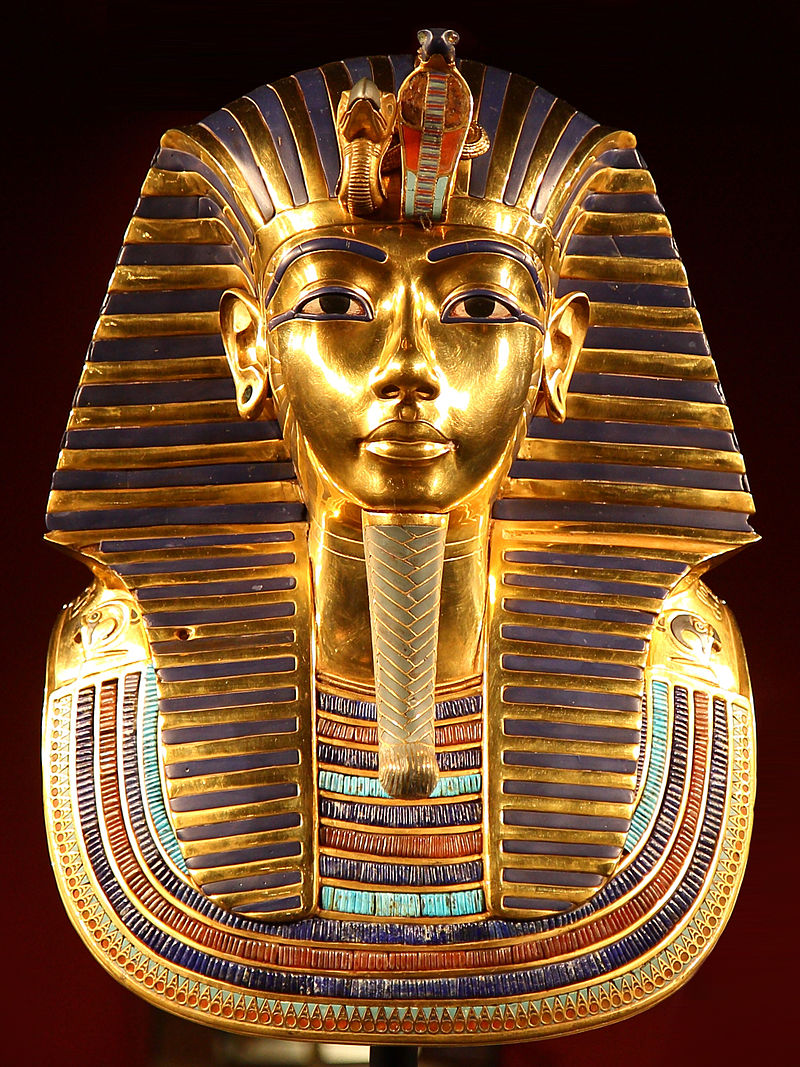
Altes Ägypten ist die allgemeine Bezeichnung für das Land Ägypten im Altertum. Der ägyptische Name lautete Kemet und bedeutet „schwarzes Land“. Kemet bezeichnet das Delta des Nils und geht auf den schwarzen Schlamm zurück, der nach der jährlichen Nilschwemme zurückblieb und eine fruchtbare Ernte garantierte. Eine andere Bezeichnung für das Land des Altertums war Ta meri (T3 mrj), was mit „geliebtes Land“ übersetzt wird.[1]
古埃及(阿拉伯语:مصر القديمة)是位于非洲东北部尼罗河中下游地区的一段时间跨度近3000年的古代文明,开始于公元前32世纪左右时美尼斯统一上下埃及建立第一王朝,终止于公元前343年波斯再次征服埃及,虽然之后古埃及文化还有少量延续,但到公元以后的时代,古埃及已经彻底被异族文明所取代,在连象形文字也被人们遗忘后,古代史前社会留给后人的是宏伟的建筑与无数谜团,1798年,拿破仑远征埃及,发现罗塞塔石碑,1822年法国学者商博良解读象形文字成功,埃及学才诞生,古埃及文明才重见天日。直到今日都还不断被挖掘出来。
古埃及的居民是由北非的土著居民和来自西亚的游牧民族塞姆人融合形成的多文化圈。约公元前6000年,因为地球轨道的运转规律性变化、间冰期的高峰过去等客观气候因素,北非茂密的草原开始退缩,人们放弃游牧而开始寻求固定的水源以耕作,即尼罗河河谷一带,公元前4千年后半期,此地逐渐形成国家,至公元前343年为止,共经历前王朝、早王朝、古王国、第一中间期、中王国、第二中间期、新王国、第三中间期、后王朝9个时期31个王朝的统治(参见“古埃及历史”一节)。其中古埃及在十八王朝时(公元前15世纪)达到鼎盛,南部尼罗河河谷地带的上埃及的领域由现在的苏丹到埃塞俄比亚,而北部三角洲地区的下埃及除了现在的埃及和部分利比亚以外,其东部边界越过西奈半岛直达迦南平原。[1]
在社会制度方面,古埃及有自己的文字系统,完善的行政体系和多神信仰的宗教系统,其统治者称为法老,因此古埃及又称为法老时代或法老埃及[2]。古埃及的国土紧密分布在尼罗河周围的狭长地带,是典型的水力帝国[来源请求]。古埃及跟很多文明一样,具有保存遗体的丧葬习俗,透过这些木乃伊的研究能一窥当时人们的日常生活,对古埃及的研究在学术界已经形成一门专门的学科,称为“埃及学”。
エジプトは不毛の砂漠地帯であるが、毎年春のナイル川の増水で水に覆われる地域には河土が運ばれて堆積し、農耕や灌漑が可能になる。この氾濫原だけが居住に適しており、主な活動はナイル河畔で行われた。ナイル川の恩恵を受ける地域はケメト(黒い大地)と呼ばれ、ケメトはエジプトそのものを指す言葉として周囲に広がるデシェレト(赤い大地、ナイル川の恩恵を受けない荒地)と対比される概念だった。このケメトの範囲の幅は非常に狭く、ナイル川の本流・支流から数kmの範囲にとどまっていた。しかしながら川の周囲にのみ人が集住しているということは交通においては非常に便利であり、川船を使って国内のどの地域にも素早い移動が可能であった。この利便性は、ナイル河畔に住む人々の交流を盛んにし、統一国家を建国し維持する基盤となった。
ナイル川本流からナイル川の上流は谷合でありナイル川1本だけが流れ、下流はデルタ地帯(ナイル川デルタ)が広がっている。最初に上流地域(上エジプト)と下流地域(下エジプト)[1]でそれぞれ違った文化が発展した後に統一されたため、ファラオ(王)の称号の中に「上下エジプト王」という部分が残り、古代エジプト人も自国のことを「二つの国」と呼んでいた。
毎年のナイル川の氾濫を正確に予測する必要から天文観測が行われ、太陽暦が作られた。太陽とシリウス星が同時に昇る頃、ナイル川は氾濫したという。また、氾濫が収まった後に農地を元通り配分するため、測量術、幾何学、天文学が発達した。ヒエログリフから派生したワディ・エル・ホル文字と原シナイ文字(原カナン文字)は世界の殆どのアルファベットの起源となったされる。
エジプト文明と並ぶ最初期における農耕文明の一つであるメソポタミア文明が、民族移動の交差点にあたり終始異民族の侵入を被り支配民族が代わったのと比べ、地理的に孤立した位置にあったエジプトは比較的安定しており、部族社会が城壁を廻らせて成立する都市国家の痕跡は今の所発見されていない。
Ancient Egypt was a civilization of ancient North Africa, concentrated along the lower reaches of the Nile River in the place that is now the country Egypt. Ancient Egyptian civilization followed prehistoric Egypt and coalesced around 3100 BC (according to conventional Egyptian chronology)[1] with the political unification of Upper and Lower Egypt under Menes (often identified with Narmer).[2] The history of ancient Egypt occurred as a series of stable kingdoms, separated by periods of relative instability known as Intermediate Periods: the Old Kingdom of the Early Bronze Age, the Middle Kingdom of the Middle Bronze Age and the New Kingdom of the Late Bronze Age.
Egypt reached the pinnacle of its power in the New Kingdom, ruling much of Nubia and a sizable portion of the Near East, after which it entered a period of slow decline. During the course of its history Egypt was invaded or conquered by a number of foreign powers, including the Hyksos, the Libyans, the Nubians, the Assyrians, the Achaemenid Persians, and the Macedonians under the command of Alexander the Great. The Greek Ptolemaic Kingdom, formed in the aftermath of Alexander's death, ruled Egypt until 30 BC, when, under Cleopatra, it fell to the Roman Empire and became a Roman province.[3]
The success of ancient Egyptian civilization came partly from its ability to adapt to the conditions of the Nile River valley for agriculture. The predictable flooding and controlled irrigation of the fertile valley produced surplus crops, which supported a more dense population, and social development and culture. With resources to spare, the administration sponsored mineral exploitation of the valley and surrounding desert regions, the early development of an independent writing system, the organization of collective construction and agricultural projects, trade with surrounding regions, and a military intended to assert Egyptian dominance. Motivating and organizing these activities was a bureaucracy of elite scribes, religious leaders, and administrators under the control of a pharaoh, who ensured the cooperation and unity of the Egyptian people in the context of an elaborate system of religious beliefs.[4][5]
The many achievements of the ancient Egyptians include the quarrying, surveying and construction techniques that supported the building of monumental pyramids, temples, and obelisks; a system of mathematics, a practical and effective system of medicine, irrigation systems and agricultural production techniques, the first known planked boats,[6] Egyptian faience and glass technology, new forms of literature, and the earliest known peace treaty, made with the Hittites.[7] Ancient Egypt has left a lasting legacy. Its art and architecture were widely copied, and its antiquities carried off to far corners of the world. Its monumental ruins have inspired the imaginations of travelers and writers for centuries. A new-found respect for antiquities and excavations in the early modern period by Europeans and Egyptians led to the scientific investigation of Egyptian civilization and a greater appreciation of its cultural legacy.[8]
L'Égypte antique est une ancienne civilisation du nord-est de l'Afrique, concentrée le long du cours inférieur du Nil, dans ce qui constitue aujourd'hui l'Égypte.
La civilisation de l'Égypte antique prend forme autour de -31501 avec l'unification politique de la Haute-Égypte au sud et de la Basse-Égypte au nord sous le règne du premier roi et se développe sur plus de trois millénaires2. Son histoire est parsemée d'une série de périodes stables politiquement, entrecoupées de plusieurs périodes intermédiaires, plus troublées. L'Égypte antique atteint son apogée sous le Nouvel Empire puis entre dans une période de lent déclin. Le pays subit les assauts répétés de puissances étrangères dans cette période tardive et le règne des pharaons prend officiellement fin en -30 où l'Empire romain conquiert l'Égypte pour en faire une province3.
Le succès de la civilisation égyptienne antique découle en partie de sa capacité à s'adapter aux conditions de la vallée du Nil. L'inondation prévisible du fleuve et le contrôle de l'irrigation de la vallée produit des récoltes excédentaires qui alimentent le développement social et culturel du pays. Ce surplus agricole donne à l'administration les moyens de financer l'exploitation minière de la vallée et des régions voisines du désert. Le développement rapide d'un système d'écriture indépendant, l'organisation de constructions collectives et de projets agricoles, les relations commerciales avec les pays voisins et une armée solide permettent à l'Égypte d'affirmer sa domination sur la région. Toutes ces activités sont organisées par une bureaucratie de scribes, de dirigeants religieux et d'administrateurs sous le contrôle du pharaon qui assure l'unité du peuple égyptien dans le cadre d'un système complexe de croyances religieuses4,5.
Les nombreuses réalisations des Égyptiens de l'Antiquité comprennent l'extraction minière, l'arpentage et les techniques de construction qui facilitent la construction de pyramides monumentales, de temples et d'obélisques. On compte également à leur crédit le développement des mathématiques, de la médecine, de l'irrigation et de la production agricole, la construction des premiers navires connus, la faïence égyptienne, de nouvelles formes de littérature6. Du rassemblement des tribus primitives qui créent le premier royaume pharaonique jusqu'à son absorption au Ier siècle av. J.-C., l'Égypte antique est le théâtre d'évènements majeurs qui influencent assurément la culture et l'imaginaire des peuples lui ayant succédé. Son art et son architecture sont largement copiés et ses antiquités sont disséminées aux quatre coins du monde. Un regain d'intérêt pour la période antique au début de l'époque moderne conduit à de nombreuses investigations scientifiques de la civilisation égyptienne, notamment par des fouilles, et à une meilleure appréciation de son héritage culturel, pour l'Égypte et le monde7.
Con Antico Egitto si intende la civiltà sviluppatasi lungo la Valle del Nilo a partire dalle cateratte, a sud e al confine con l’attuale Sudan[N 1], alla foce, al delta, nel Mar Mediterraneo, per un’estensione complessiva di circa 1000 km. Benché il territorio fosse molto più vasto, comprendendo gran parte anche del Deserto Libico-Nubiano, gli insediamenti umani, fin dai tempi più remoti, si svilupparono solo nella stretta fascia verdeggiante a ridosso delle rive del fiume larga, in alcuni punti anche solo poche centinaia di metri.
Fin dal 3500 a.C., di pari passo con l'avvento dell'agricoltura, in particolare la coltivazione del grano, dell’orzo e del lino, si ha contezza di insediamenti umani specie lungo le rive del Nilo[1]. Le piene annuali del fiume, infatti, favorivano la coltivazione anche con più raccolti annui grazie ai sedimenti, particolarmente fertili (Limo), che il fiume, nel suo ritirarsi, lasciava sul terreno. Ciò comportò, fin dai tempi più remoti, conseguentemente, la necessità di controllare, incanalare e conservare le acque onde garantire il costante approvvigionamento, vuoi per il sostentamento umano, vuoi per quello del bestiame e delle piantagioni.
Non è da escludersi che proprio la complessa necessità di dover far fronte alle esigenze connesse con la gestione dell’agricoltura, e segnatamente, delle acque nilotiche, abbia favorito proprio il formarsi delle prime comunità su territori parziali tuttavia ben differenziati e politicamente e geograficamente individuabili. Tali entità, normalmente individuate con il termine greco di nomoi, ben presto si costituirono in due distinte entità geo-politiche più complesse. Tale l’importanza del fiume Nilo, che attraversava tutto il paese, che anche le denominazioni di tali due macro-aree fanno riferimento al fiume: considerando che le sorgenti del Nilo, benché all'epoca non note, dovevano essere a sud, tale sarà l’Alto Egitto, mentre, di converso, l’area del delta, verso il Mediterraneo, sarà indicato come Basso Egitto[2].
Varie culture si susseguirono nella valle nilotica fin dal 3900 a.C. in quello che viene definito Periodo Predinastico. Un’entità embrionale di Stato può riconoscersi, invece, a partire dal 3200-3100 a.C. con la I dinastia e l’unificazione delle due macro-aree che resteranno, tuttavia, sempre distinte tanto che per tutta la storia del Paese i regnanti annovereranno tra i loro titoli quello di Signore delle Due Terre.
La storia dell’Antico Egitto copre, complessivamente, circa 4000 anni, dal 3900 a.C. (con il Periodo Predinastico) al 342 a.C. (con il Periodo tardo) e comprende, dal 3200 a.C., trenta dinastie regnanti riconosciute archeo-storicamente. A queste debbono esserne aggiunte altre, dette di comodo, giacché riferite, di fatto, non a governi autoctoni, o comunque derivanti dal Paese, bensì frutto di invasioni o di raggiungimento del potere da parte di regnanti stranieri. Avremo perciò una XXXI dinastia, costituita da re persiani, una XXXII dinastia macedone, che annovera un solo sovrano, Alessandro Magno, e una XXXIII dinastia, meglio nota come Dinastia tolemaica, nata dallo smembramento dell’impero di Alessandro.
Anche molti imperatori romani, occupato l’Egitto, non disdegnarono di assumere il titolo di faraone con titolatura geroglifica.
El Antiguo Egipto fue una civilización que se originó a lo largo del cauce medio y bajo del río Nilo, y que alcanza tres épocas de esplendor faraónico en los periodos denominados Imperio Antiguo, Imperio Medio, e Imperio Nuevo. Alcanzaba desde el delta del Nilo en el norte, hasta Elefantina, en la primera catarata del Nilo, en el sur, llegando a tener influencia desde el Éufrates hasta Jebel Barkal, en la cuarta catarata del Nilo, en épocas de máxima expansión. Su territorio también abarcó, en distintos periodos, el desierto oriental y la línea costera del mar Rojo, la península del Sinaí, y un gran territorio occidental dominando los dispersos oasis. Históricamente, fue dividido en Alto y Bajo Egipto, al sur y al norte respectivamente.
La civilización egipcia se desarrolló durante más de 3000 años. Comenzó con la unificación de algunas ciudades del valle del Nilo,1 alrededor del año 3150 a. C.,2 y convencionalmente se da por terminado en el año 31 a. C., cuando el Imperio romano conquistó y absorbió el Egipto ptolemaico, que desaparece como Estado.3 Este acontecimiento no representó el primer período de dominación extranjera, pero fue el que condujo a una transformación gradual en la vida política y religiosa del valle del Nilo, marcando el final del desarrollo independiente de su cultura. Su identidad cultural había comenzado a diluirse paulatinamente tras las conquistas de los reyes de Babilonia (siglo VI a. C.) y Macedonia (siglo IV a. C.), desapareciendo su religión con la llegada del cristianismo, en la época de Justiniano I, cuando en 535 fue prohibido el culto a la diosa Isis, en el templo de File.
Egipto tiene una combinación única de características geográficas, situada en el África nororiental y confinada por Libia, Sudán, el mar Rojo y el mar Mediterráneo. El río Nilo fue la clave para el éxito de la civilización egipcia, ya que éste permitía el aprovechamiento de los recursos y ofrecía una significativa ventaja sobre otros oponentes: el légamo fértil depositado a lo largo de los bancos del Nilo tras las inundaciones anuales significó para los egipcios el practicar una forma de agricultura menos laboriosa que en otras zonas, liberando a la población para dedicar más tiempo y recursos al desarrollo cultural, tecnológico y artístico.
La vida se ordenaba en torno al desarrollo de un sistema de escritura y de una literatura independientes, así como en un cuidadoso control estatal sobre los recursos naturales y humanos, caracterizado sobre todo por la irrigación de la fértil cuenca del Nilo y la explotación minera del valle y de las regiones desérticas circundantes, la organización de proyectos colectivos como las grandes obras públicas, el comercio con las regiones vecinas de África del este y central y con las del Mediterráneo oriental y, finalmente, por un poderío militar capaz de derrotar a cualquier enemigo, y que mantuvieron una hegemonía imperial y la dominación territorial de civilizaciones vecinas en diversos períodos. La motivación y la organización de estas actividades estaba encomendada a una burocracia de élite sociopolítica y económica, los escribas, bajo el control del Faraón, un personaje semidivino, perteneciente a una sucesión de dinastías, que garantizaba la cooperación y la unidad del pueblo egipcio en el contexto de un elaborado sistema de creencias religiosas.45
Los muchos logros de los egipcios incluyen la extracción minera, la topografía y las técnicas de construcción que facilitaron el levantamiento de monumentales pirámides, templos y obeliscos, unos procedimientos matemáticos, una práctica médica eficaz, métodos de riego y técnicas de producción agrícola, las primeras naves conocidas,6 la tecnología del vidrio y de la fayenza, las nuevas formas de la literatura y el tratado de paz más antiguo conocido, firmado con los hititas.7 Egipto dejó un legado duradero, su arte y arquitectura fueron ampliamente copiados, y sus antigüedades se llevaron a los rincones más lejanos del mundo. Sus ruinas monumentales han inspirado la imaginación de los viajeros y escritores desde hace siglos. Un nuevo respeto por las antigüedades y excavaciones en la época moderna han llevado a la investigación científica de la civilización egipcia y a una mayor apreciación de su legado cultural.8
Древний Еги́пет (от др.-греч. Αἴγυπτος и лат. Aegyptus), самоназвание Та-кемет, Та-мери, Та-уи и др. (транслит. егип. tA-kmt, tA-mrj, tA-wy), Ке́ми (копт. Ⲭⲏⲙⲓ) — название исторического региона и культуры значительной цивилизации Древнего мира, существовавшей на северо-востоке Африки вдоль нижнего течения реки Нил. История Древнего Египта составляет около 40 веков и подразделяется исследователями на додинастический период (относится к финалу доисторического периода, краткий обзор которого также приводится в статье), династический период (основной этап существования египетской цивилизации протяжённостью около 27 веков), эллинистический период (синтез с греко-македонской культурой под властью династии Птолемеев), римский период (в составе древнеримского государства, как одна из важнейших провинций Римской империи). Временные границы существования древнеегипетской культуры, принятые исследователями, охватывают период с середины IV тысячелетия до н. э. до IV век н. э. Византийско-коптский период (в составе Византии) хотя и относится уже к раннему средневековью, при этом также иногда рассматривается в рамках изучения Древнего Египта. Временные границы начинаются с IV века и заканчиваются арабским завоеванием в VII веке.
Возвышение древнеегипетской цивилизации в большой степени было результатом её способности адаптироваться к условиям речной долины и дельты Нила. Регулярные ежегодные разливы, удобряющие почву плодородным илом, а также организация ирригационной системы земледелия позволяли производить зерновые культуры в избыточном количестве, обеспечивавшем социальное и культурное развитие. Концентрация людских и материальных ресурсов в руках администрации способствовала созданию и поддержанию сложной сети каналов, появлению регулярной армии и расширению торговли, а с постепенным развитием горнодобывающего дела, полевой геодезии и строительных технологий давала возможность организовывать коллективные возведения монументальных сооружений. Принуждающей и организующей силой в Древнем Египте был хорошо развитый государственный аппарат, состоявший из жрецов, писцов и администраторов во главе с фараоном, который часто обожествлялся в сложной системе религиозных верований с развитым культом погребальных обрядов.
Древний Египет оставил огромное культурное наследие для мировой цивилизации, произведения его искусства ещё в древности вывозились в различные уголки мира и широко копировались мастерами других стран. Своеобразные архитектурные формы — величественные пирамиды, храмы, дворцы и обелиски вдохновляли воображение путешественников и исследователей в течение многих столетий. Египетскими мастерами создавались прекрасные настенные росписи и статуи, были освоены способы производства стекла и фаянса, поэтами и писателями созданы новые формы в литературе. В числе научных достижений древних египтян было создание оригинальной системы письма, математика, практическая медицина, астрономические наблюдения и возникший на их основе календарь. Интерес к памятникам, артефактам и археологическим раскопкам в Древнем Египте, возникший на рубеже XVIII—XIX веков, привёл к созданию науки египтологии и возникновению направлений искус
Das Neue Reich umfasst im Alten Ägypten die Zeit von 1550 bis 1070 v. Chr. (18. bis 20. Dynastie) und ist neben dem Alten Reich die wohl allgemein bekannteste Epoche der Pharaonenzeit.
Der Bekanntheitsgrad dieser rund 500 Jahre umfassenden Zeit liegt nicht zuletzt an den vielen kolossalen Bauwerken wie Festungen und Tempeln, welche die Herrscher haben bauen lassen. Ebenso sind viele Pharaonen durch ihre Eroberungen und Feldzüge bekannt geworden. Dazu zählt die von Thutmosis III. geführte Schlacht bei Megiddo 1457 v. Chr. oder auch die Schlacht bei Kadesch 1274 v. Chr., die Ramses II. 183 Jahre später führte.
Auch die Begräbnisstätten im Tal der Könige und Tal der Königinnen haben das ihre dazu beigetragen. Aber die wohl eindrucksvollsten Ereignisse waren die Entdeckungen der oft fast unbeschädigten Mumien der bekanntesten Herrscher des Neuen Reiches in der Cachette von Deir el-Bahari (DB/TT320) und in dem Grab Amenophis II. (KV35).

 Art
Art
 Architecture
Architecture